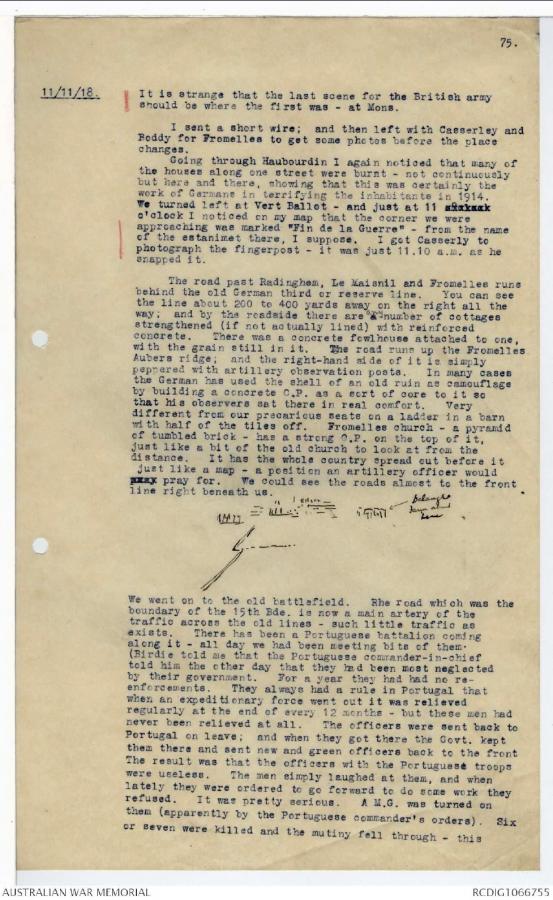“Fin de la Guerre”

"And so it is peace."
Charles Bean, diary, 11 November 1918
At 11 am on 11 November 1918, the Armistice signed by Germany finally brought the long-awaited end to the war. It came as most of the Australian forces were having a period of rest behind the front lines.
Some Australians celebrated into the night, but many describe the end of the war as an anti-climax. Charles Bean, at Lille, describes the moment as some “gruff cheers”, a few of the Lille people strung out along each side of the road, and the “occasional bleating of some child’s tin trumpet”.
On the other side of the world, Australians took to the streets to celebrate the end of the war, Melbourne, 11 November 1918. J00348
Bean spent most of 11 November 1918 at Fromelles photographing the battlefield, which remained behind German lines for most of the war. On his way there, Bean had photographed a signpost to an estaminet called “Fin de la Guerre” (End of the war). He found the battlefield “scattered with Australian kit and bones”. Returning to Lille that evening, he heard very little noise, but noticed the street lights were on: “subdued – but still lights”.
Bean found the Fromelles battlefield a sombre experience. The ground was strewn with water bottles, shell remnants, and bullet-torn kits of troops killed in the unsuccessful attack there on 19 July 1916. Bean collected several relics from Fromelles on the day of the Armistice.
Remnants of shell and bullet-torn kits at Fromelles. In the foreground two water bottles. E04037
Cast iron 1908 pattern entrenching tool head with a battle damaged spade head found near Fromelles. RELAWM00538
Australian army issue 1903 Pattern water bottle recovered from the Fromelles battlefield on the day of the Armistice. RELAWM00539

Bean diary, 11 November 1918, AWM38 3DRL 606/117/1

Bean diary, 11 November 1918, AWM38 3DRL 606/117/1
Dinner party
On 26 November 1918 Monash and Birdwood attended a dinner party given by the British Secretary of State for War to Field Marshal Sir Douglas Haig and the army commanders.
Behind the lines the Australians put on concerts that were popular with the troops. These were part of the end-of-war celebrations.

Programme for the 'Coo-ees', 24 October 1918, 3DRL/2316





